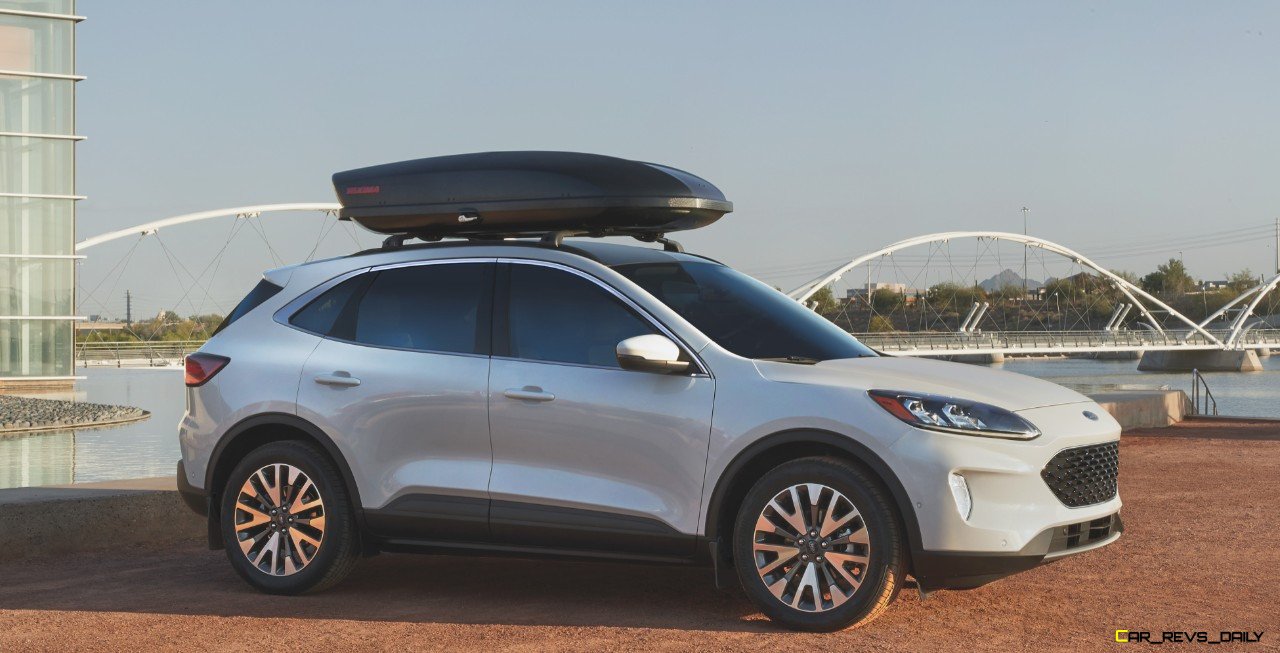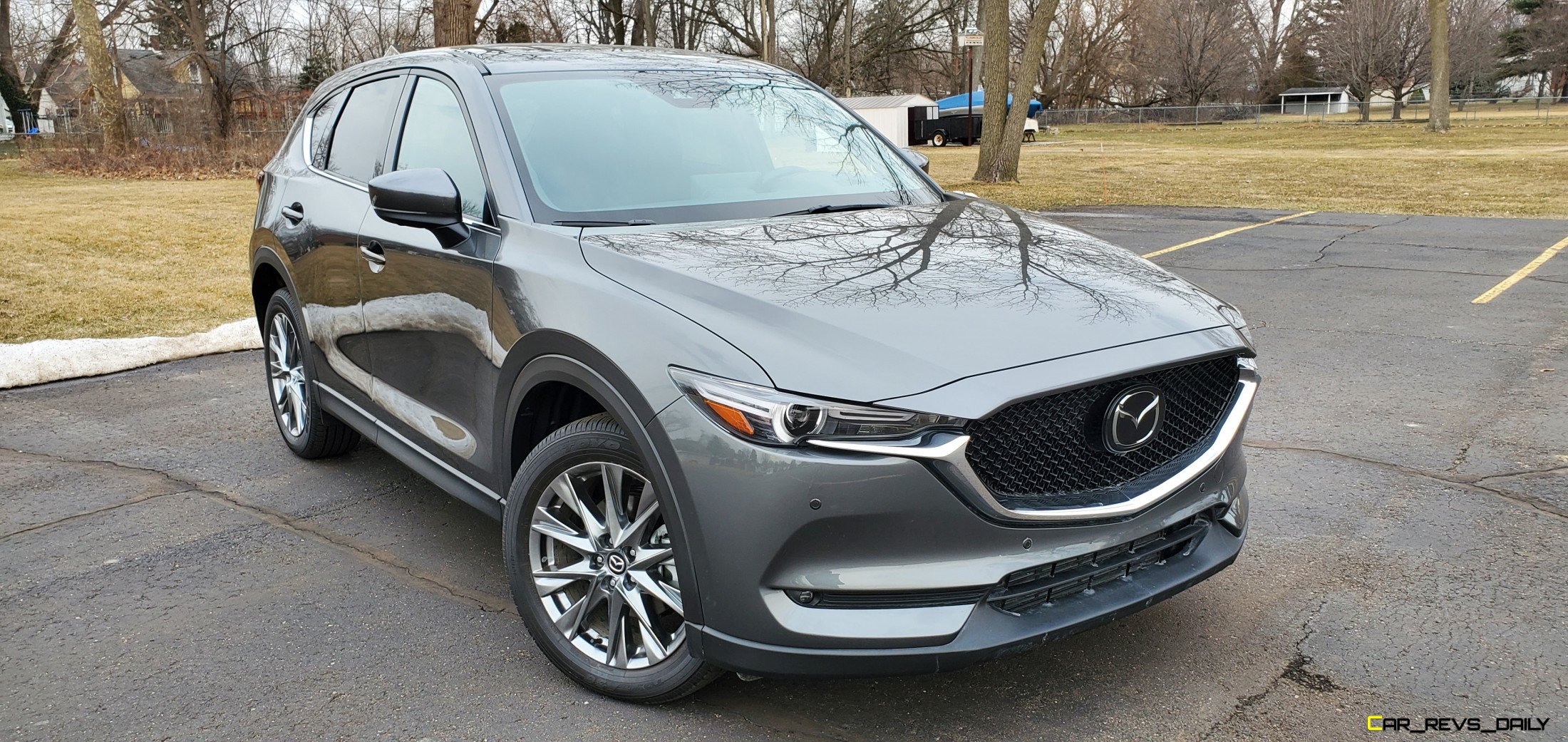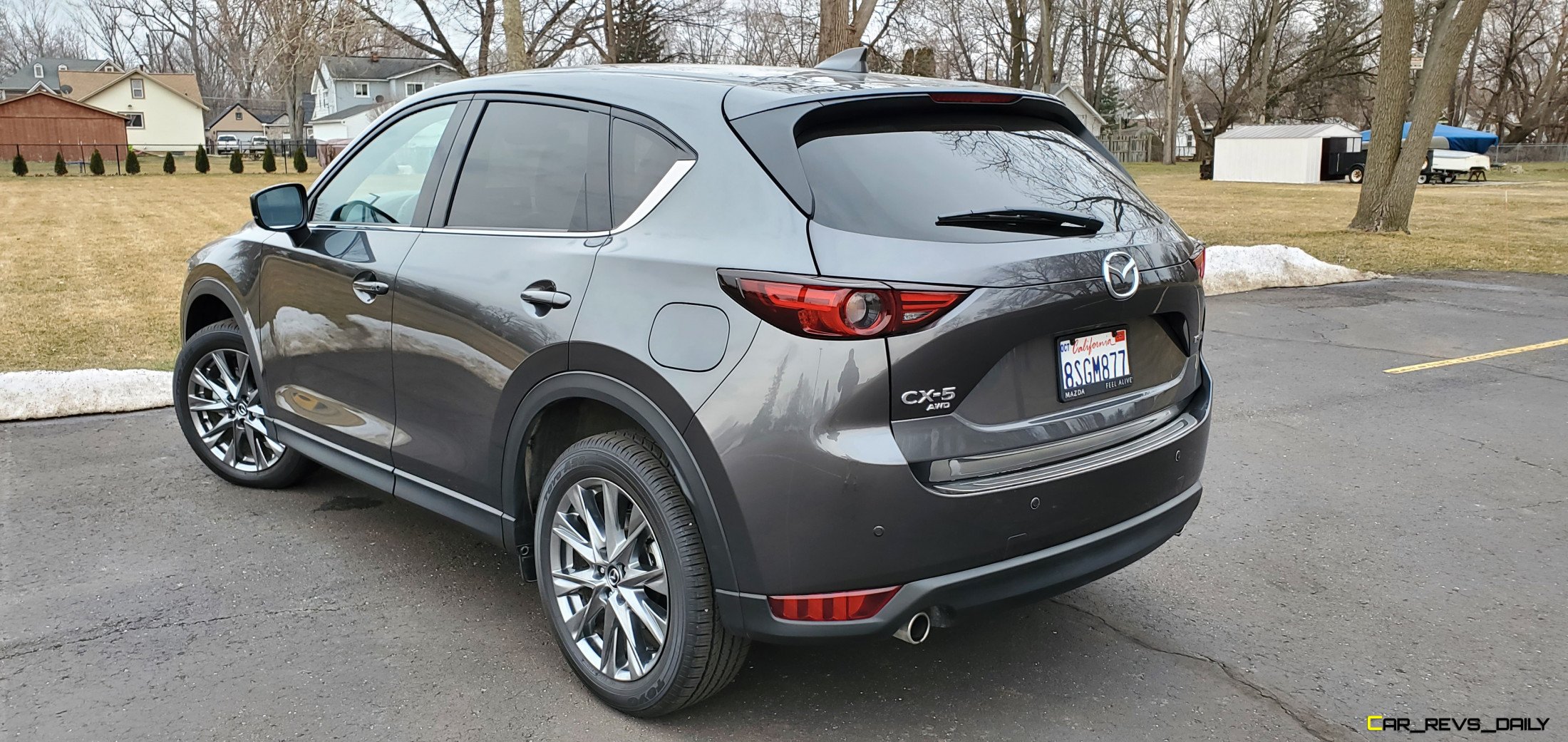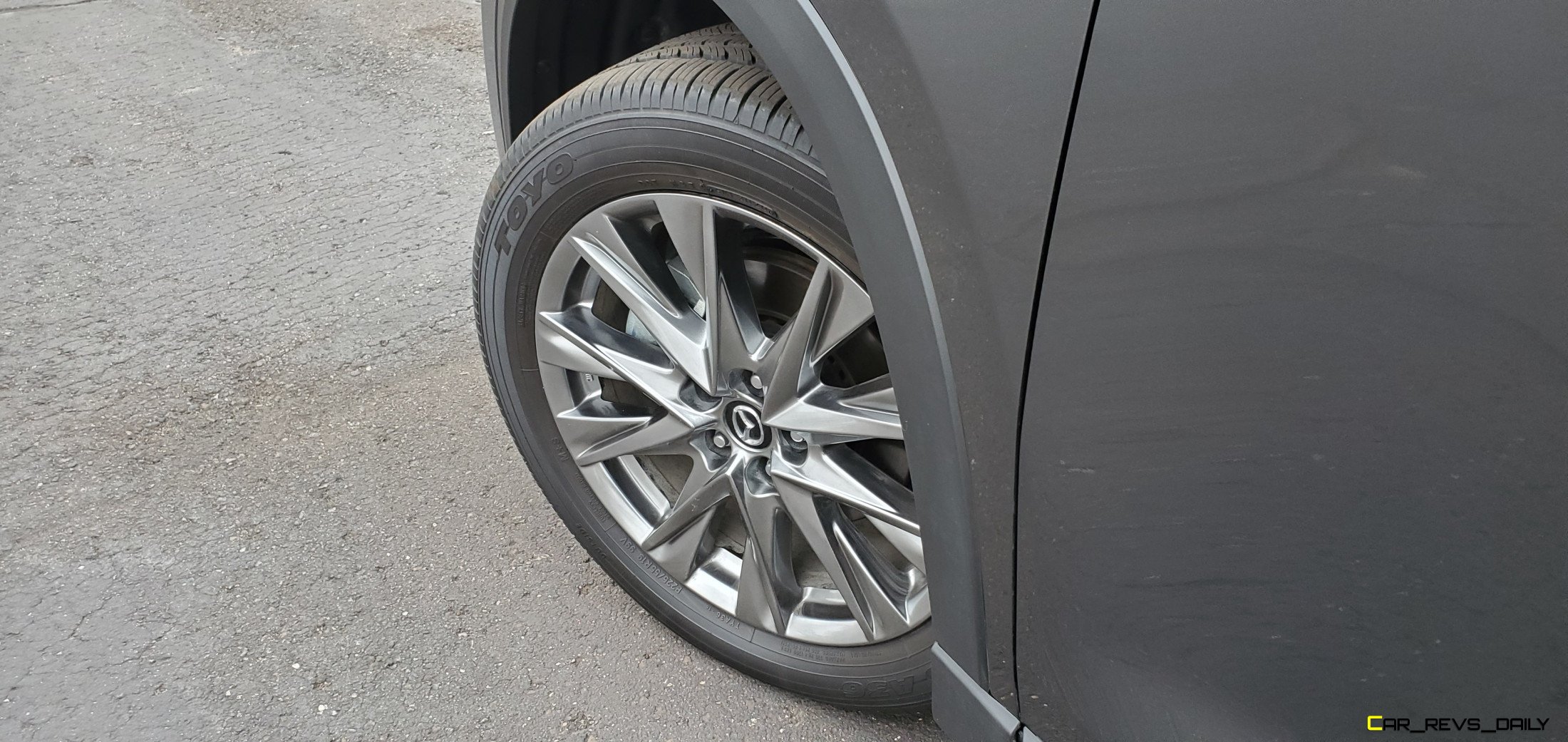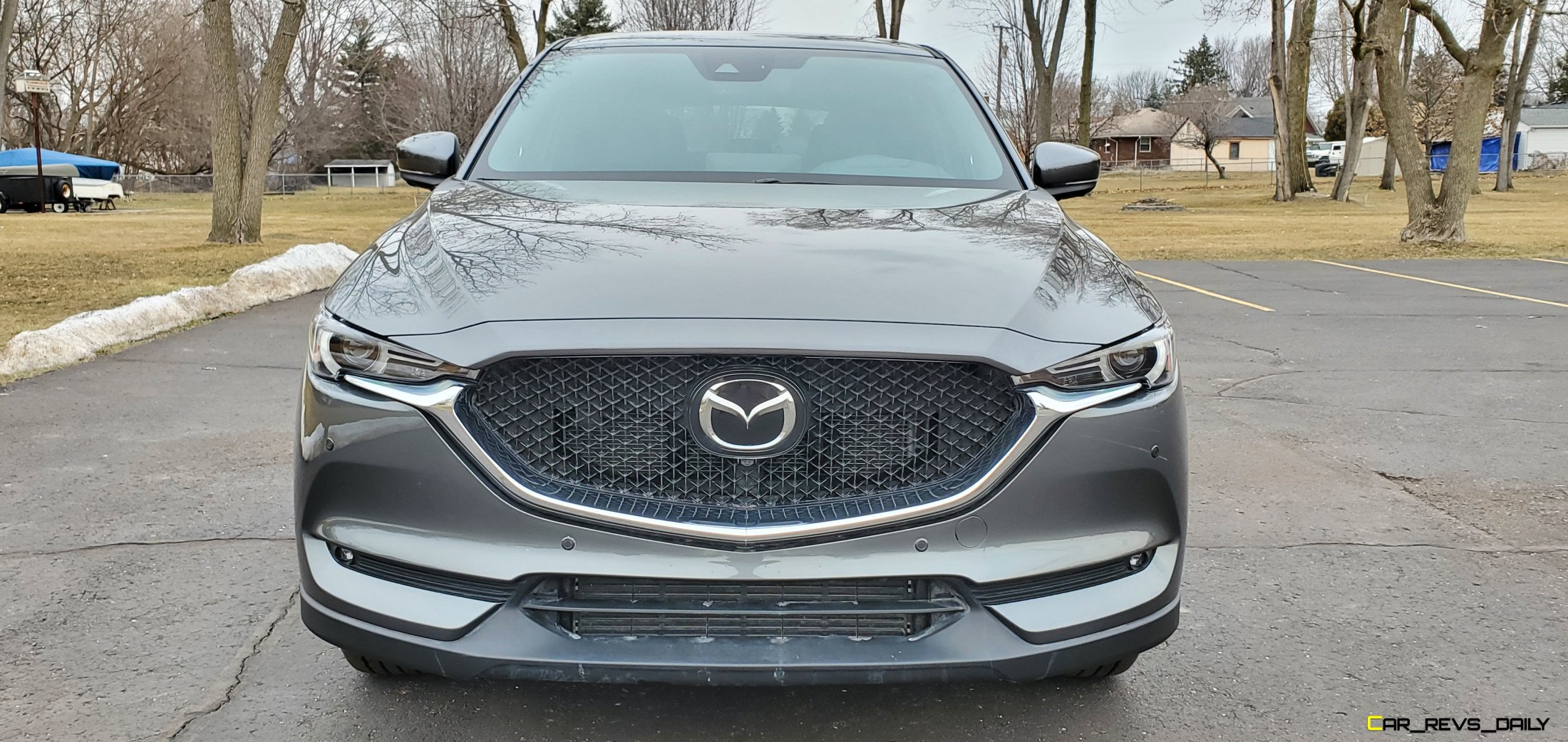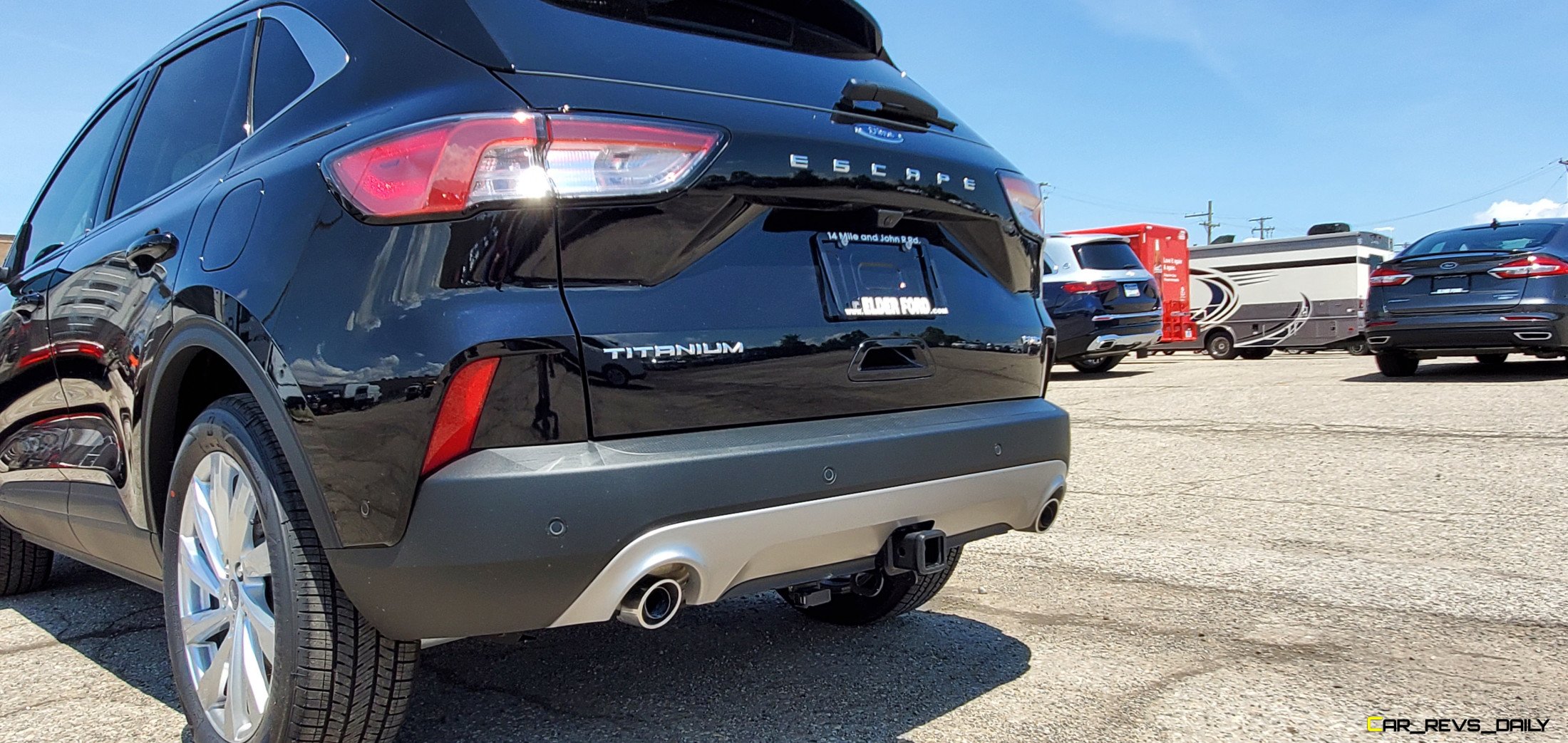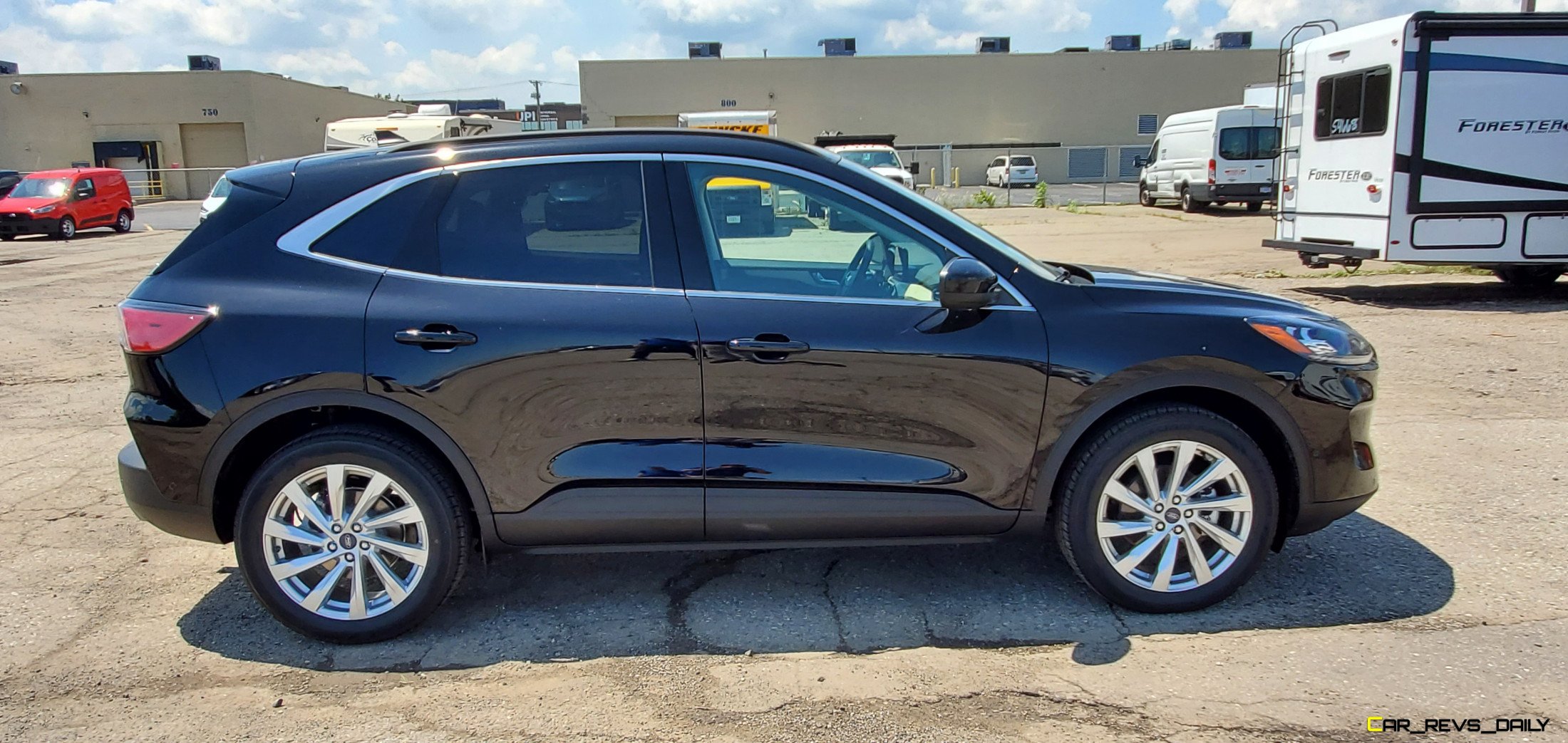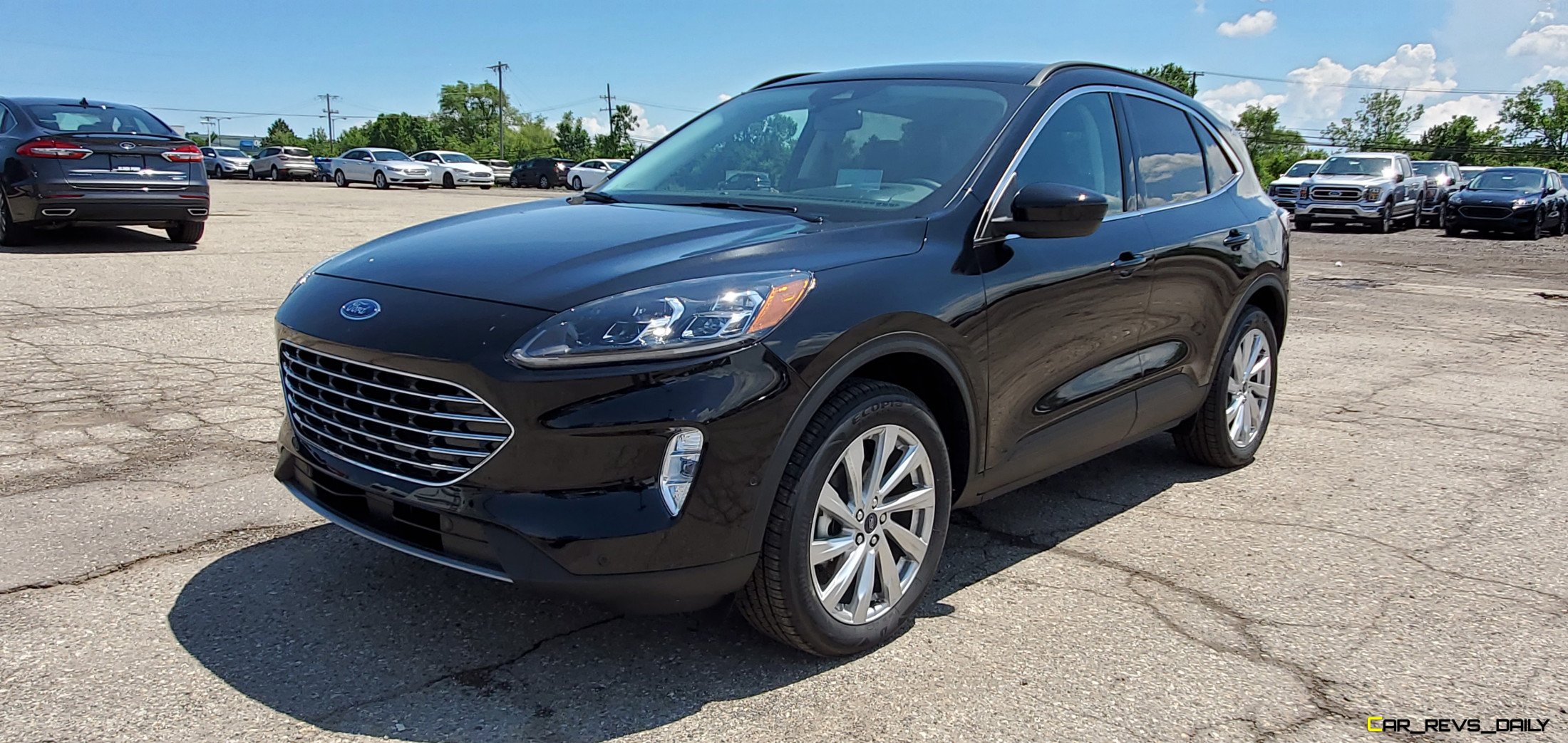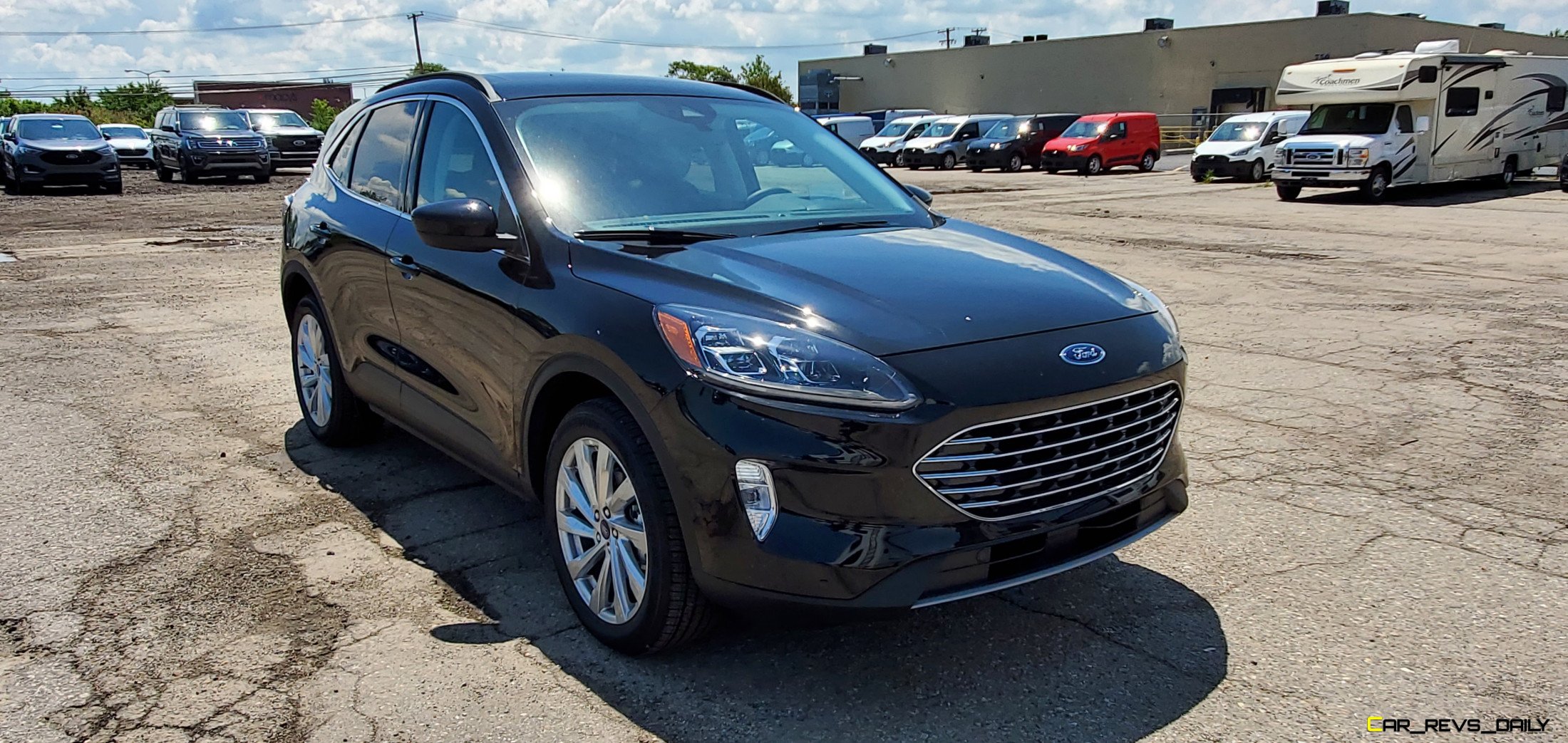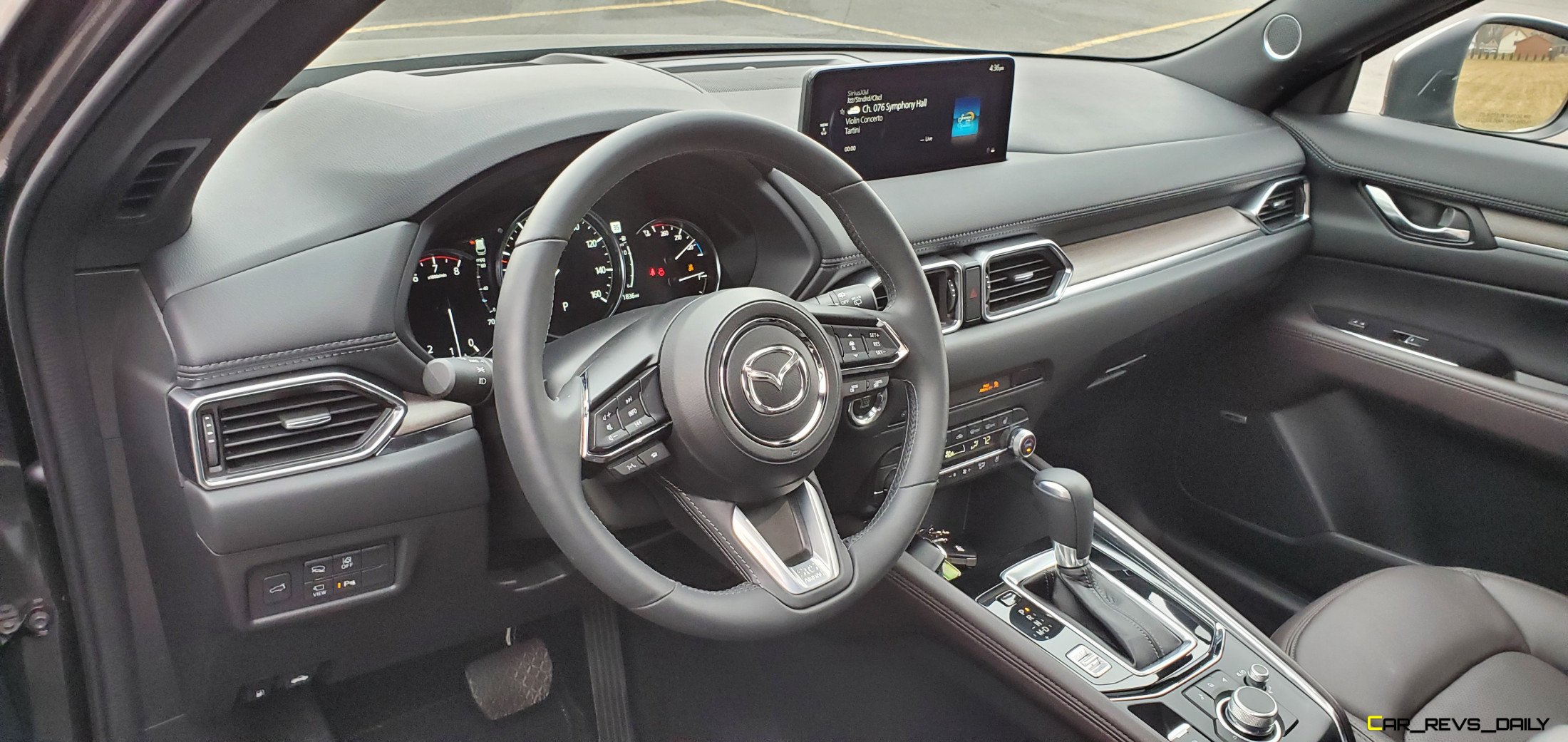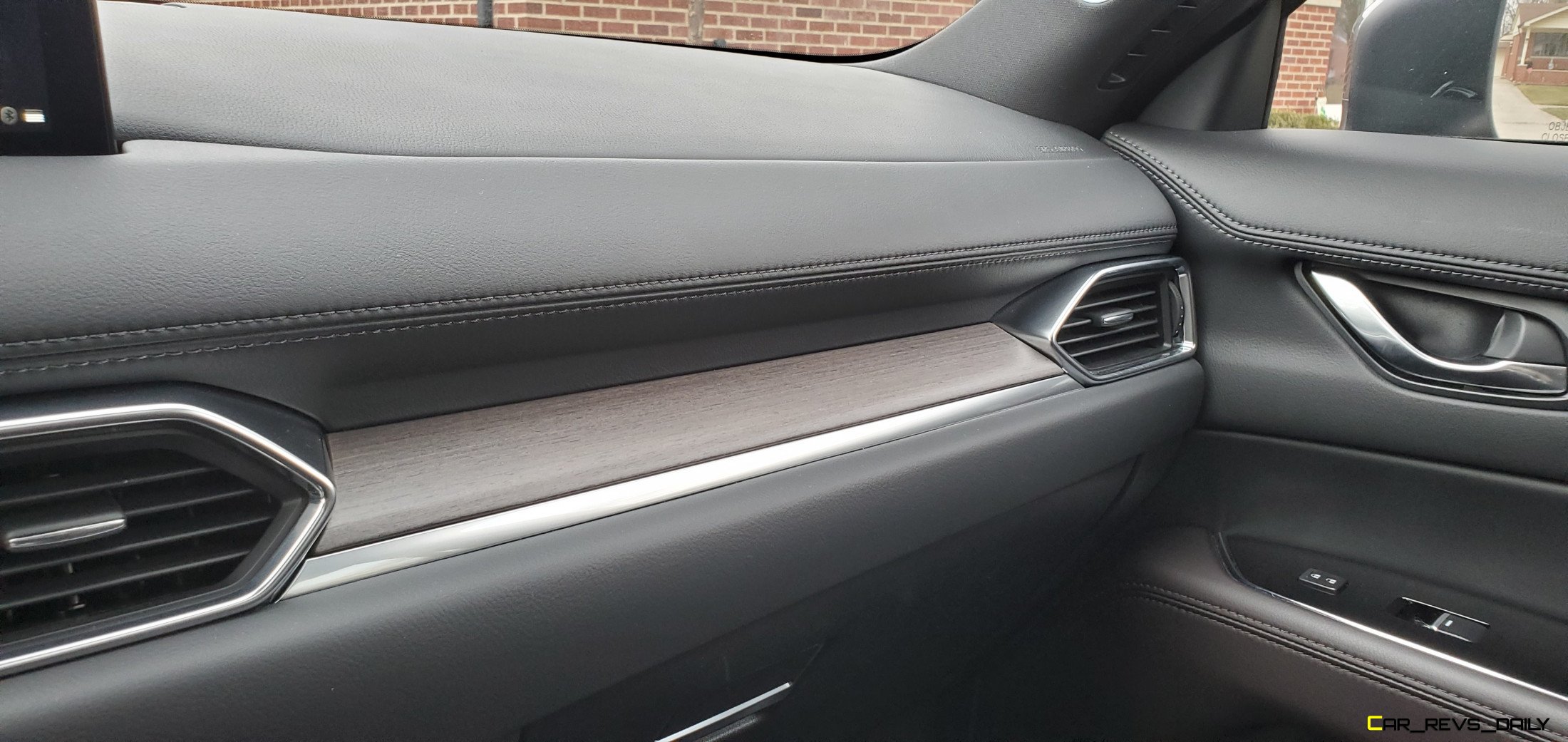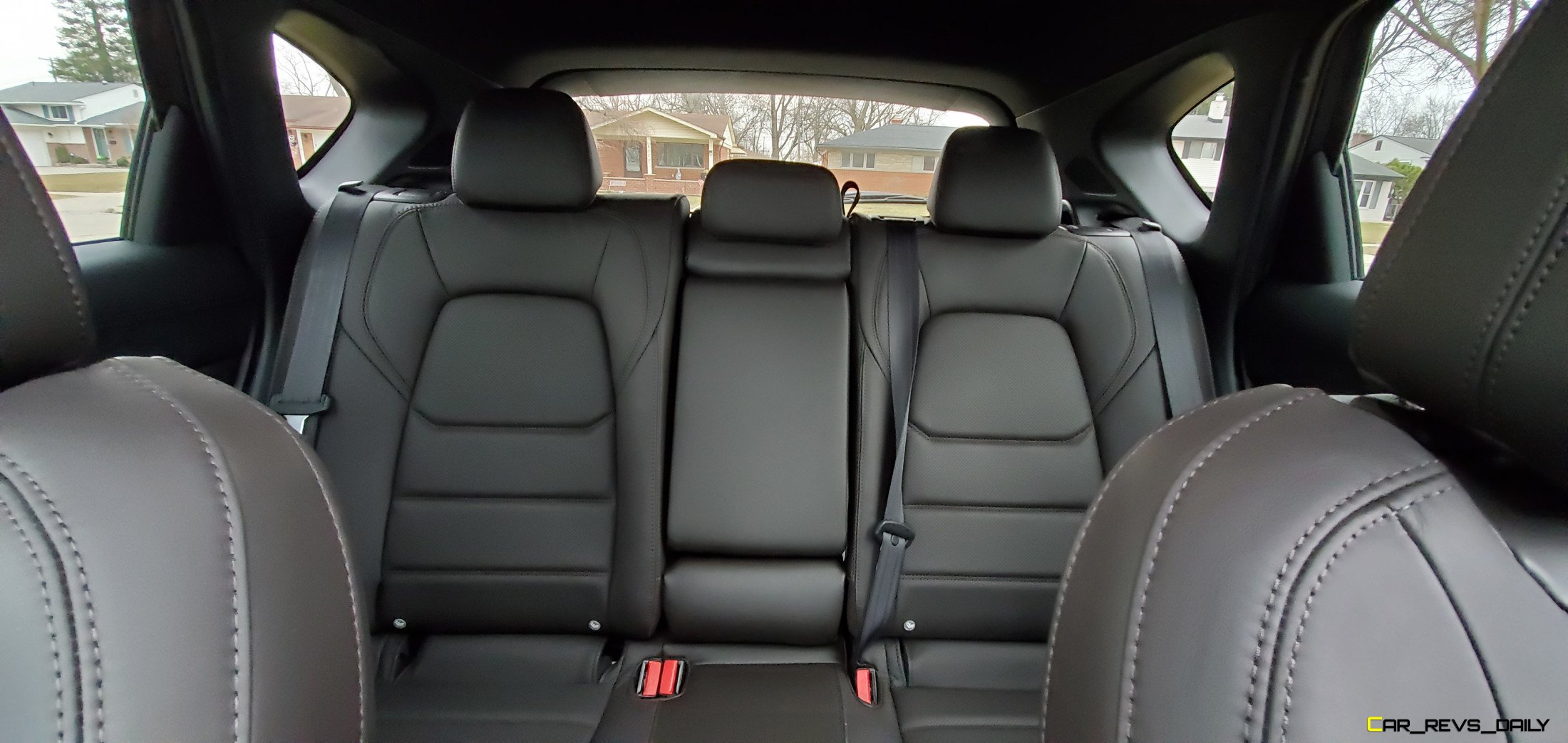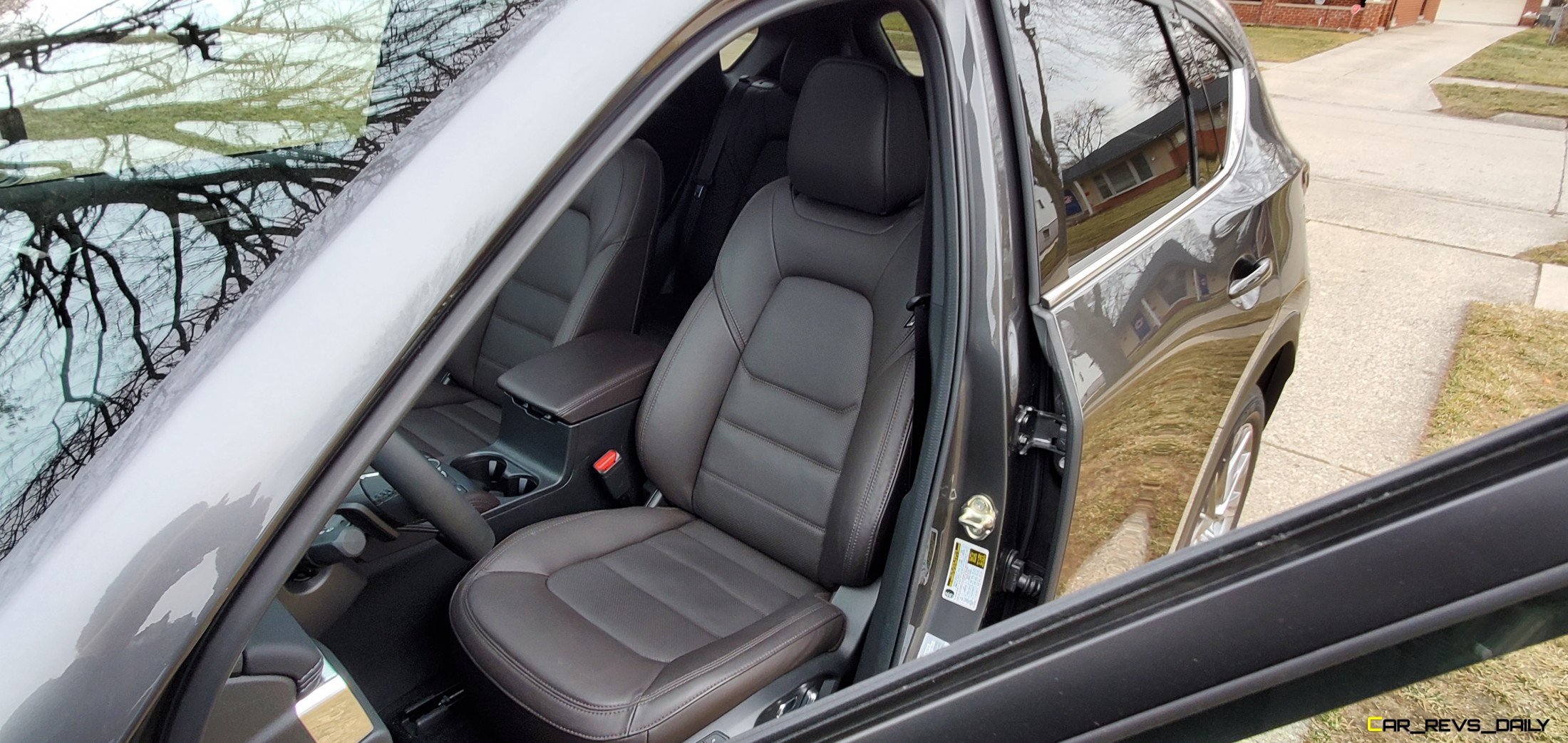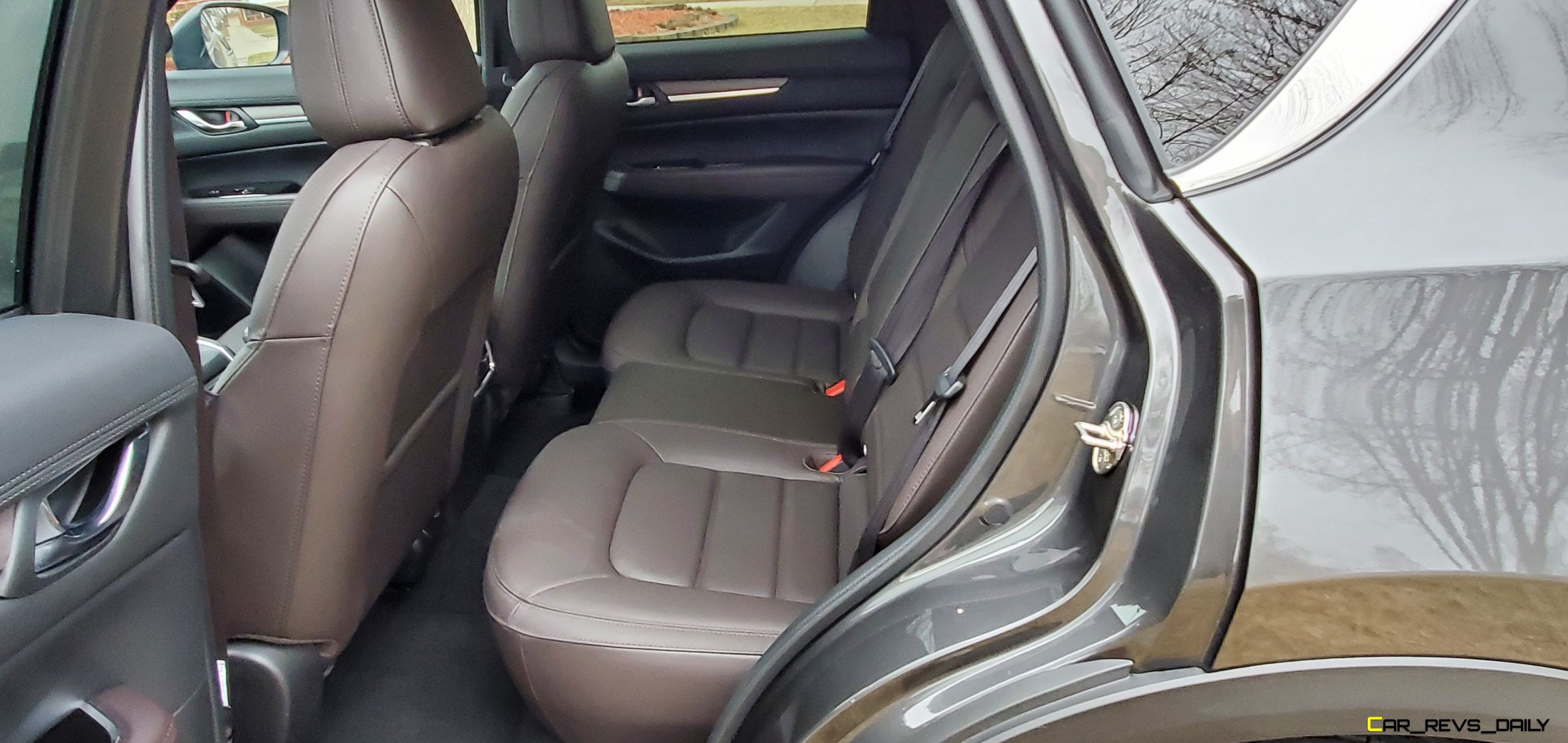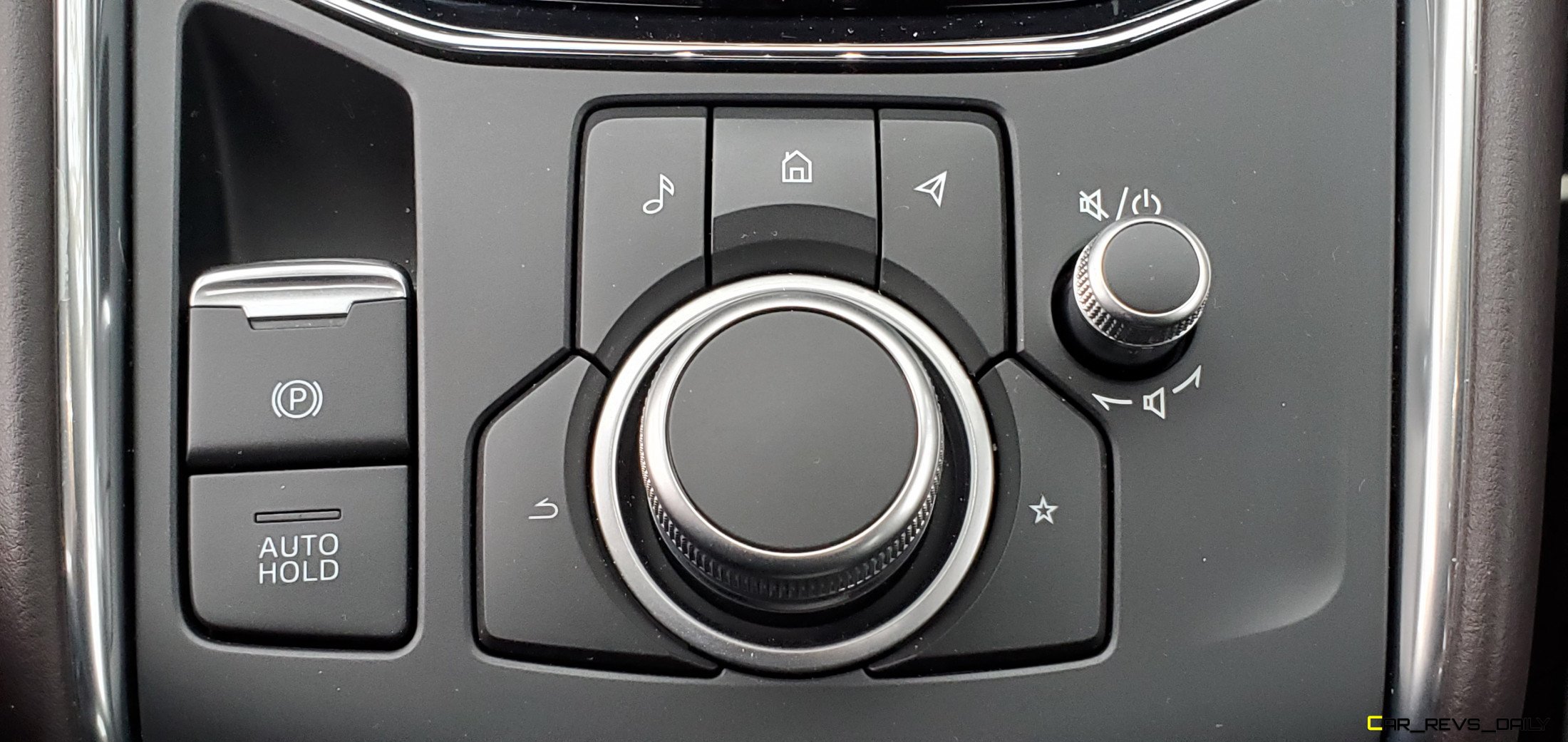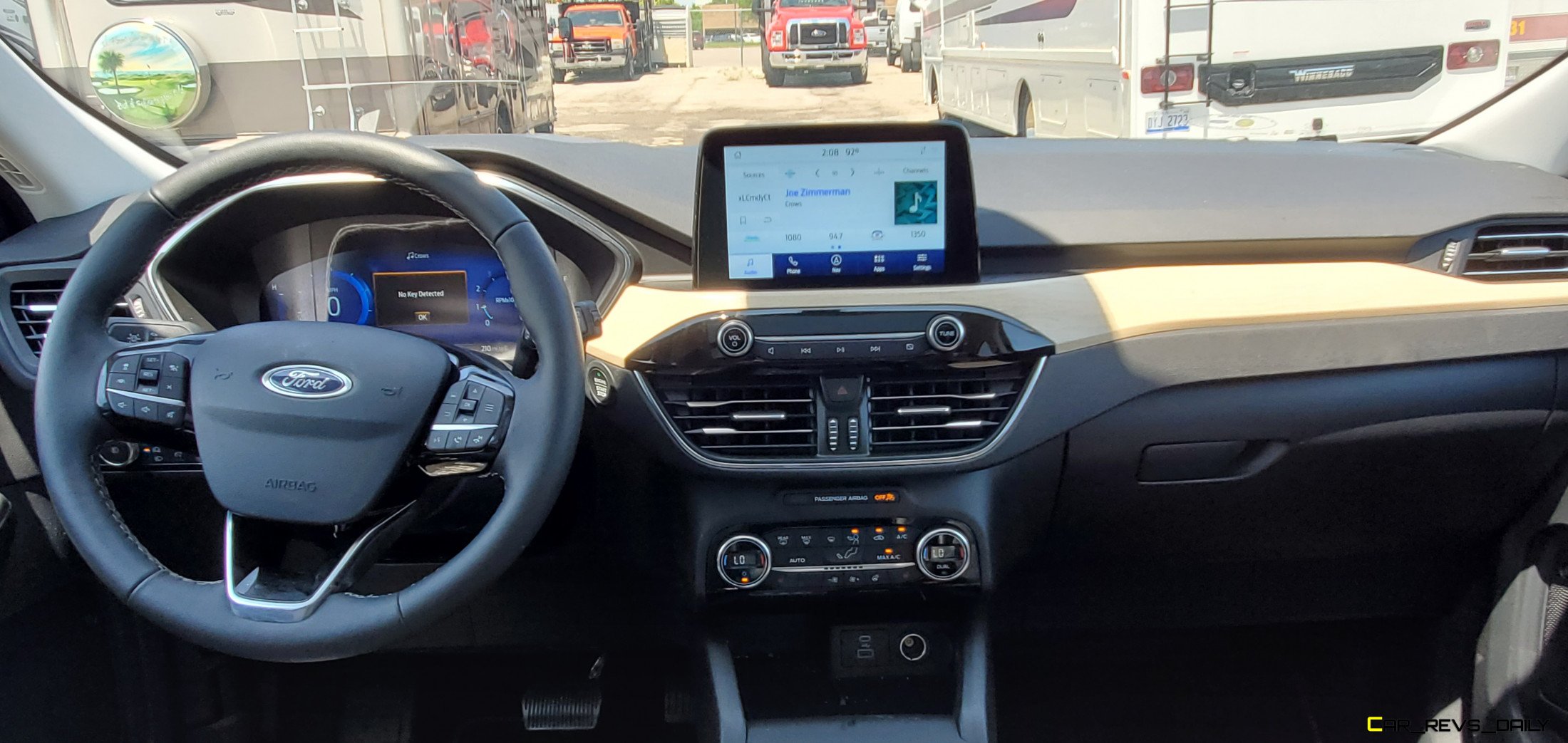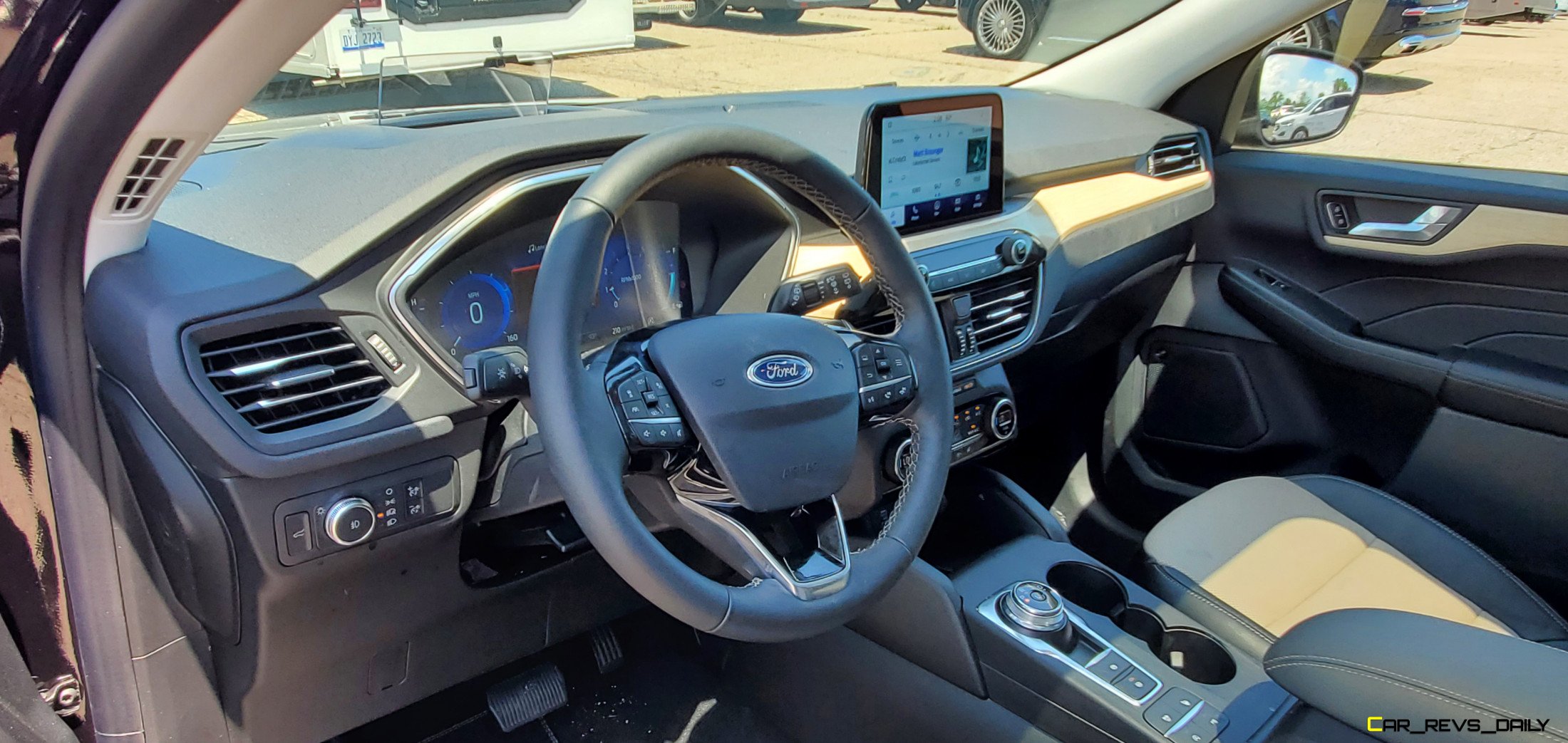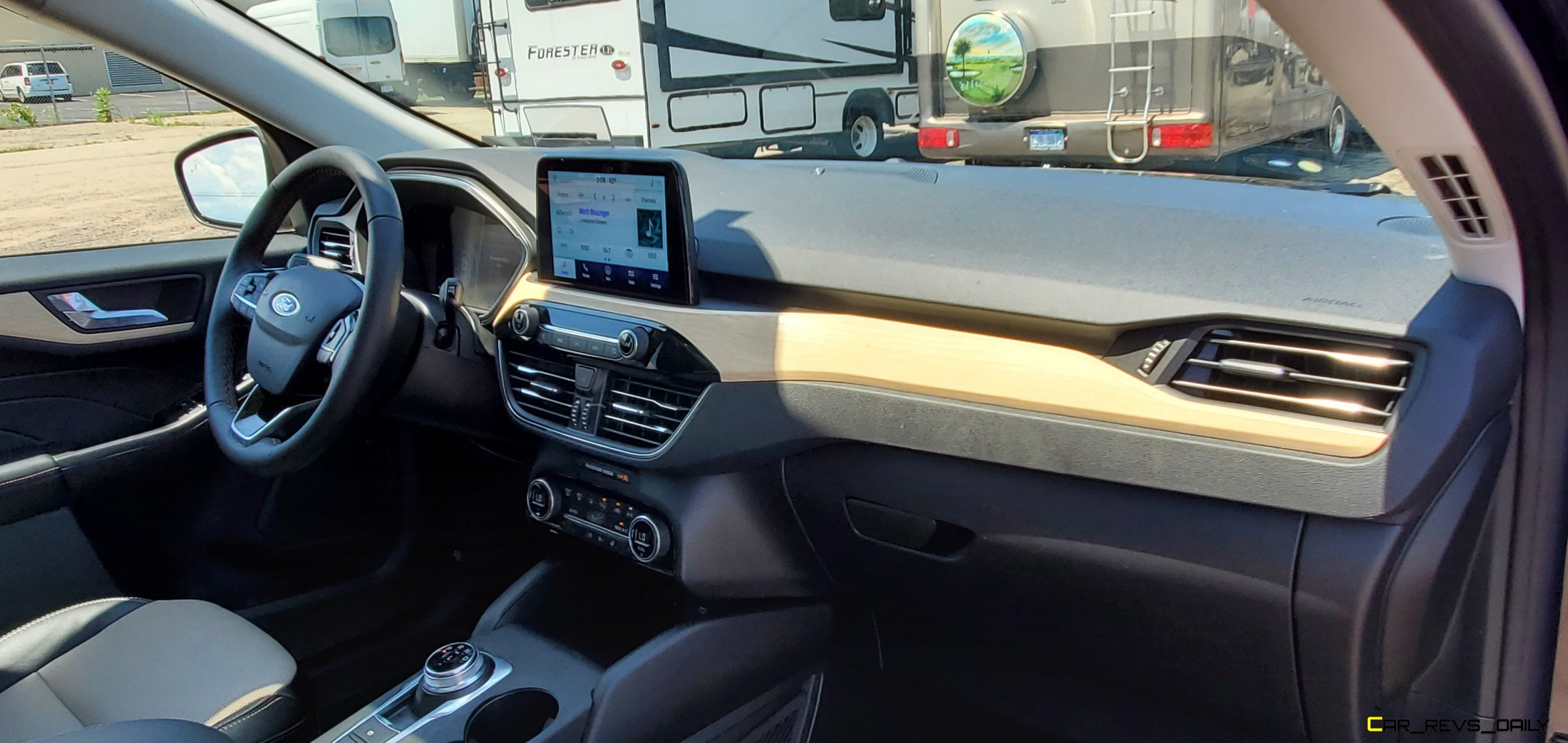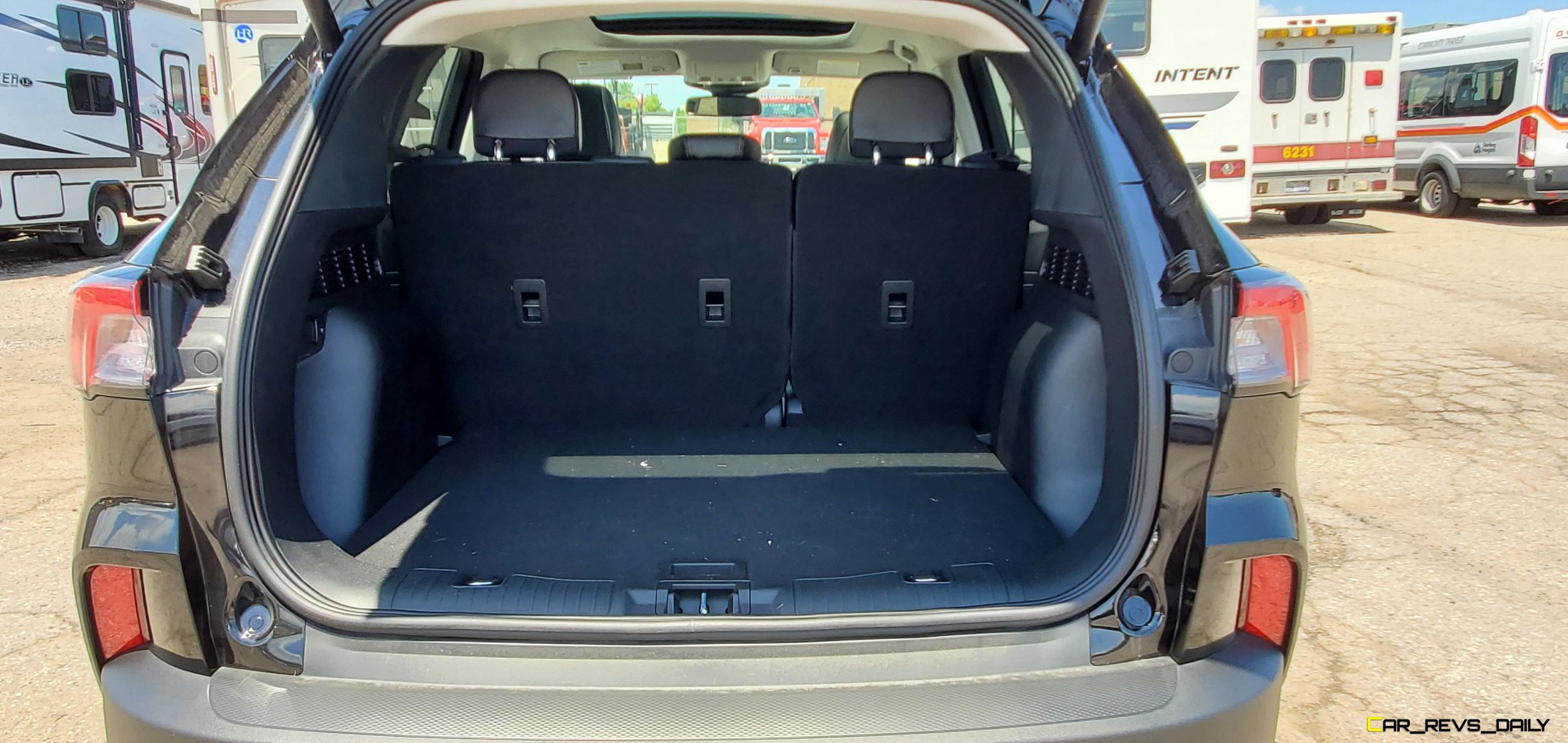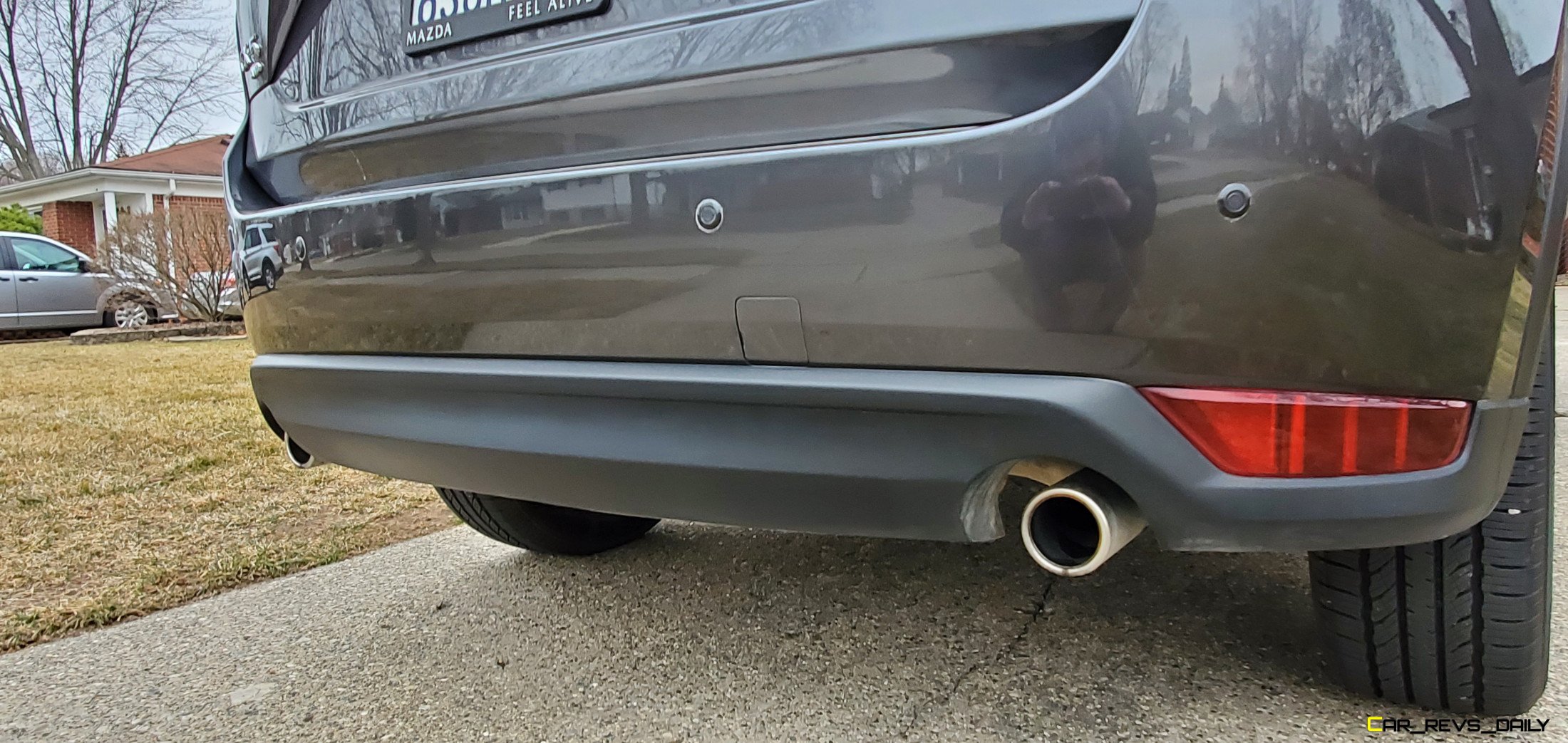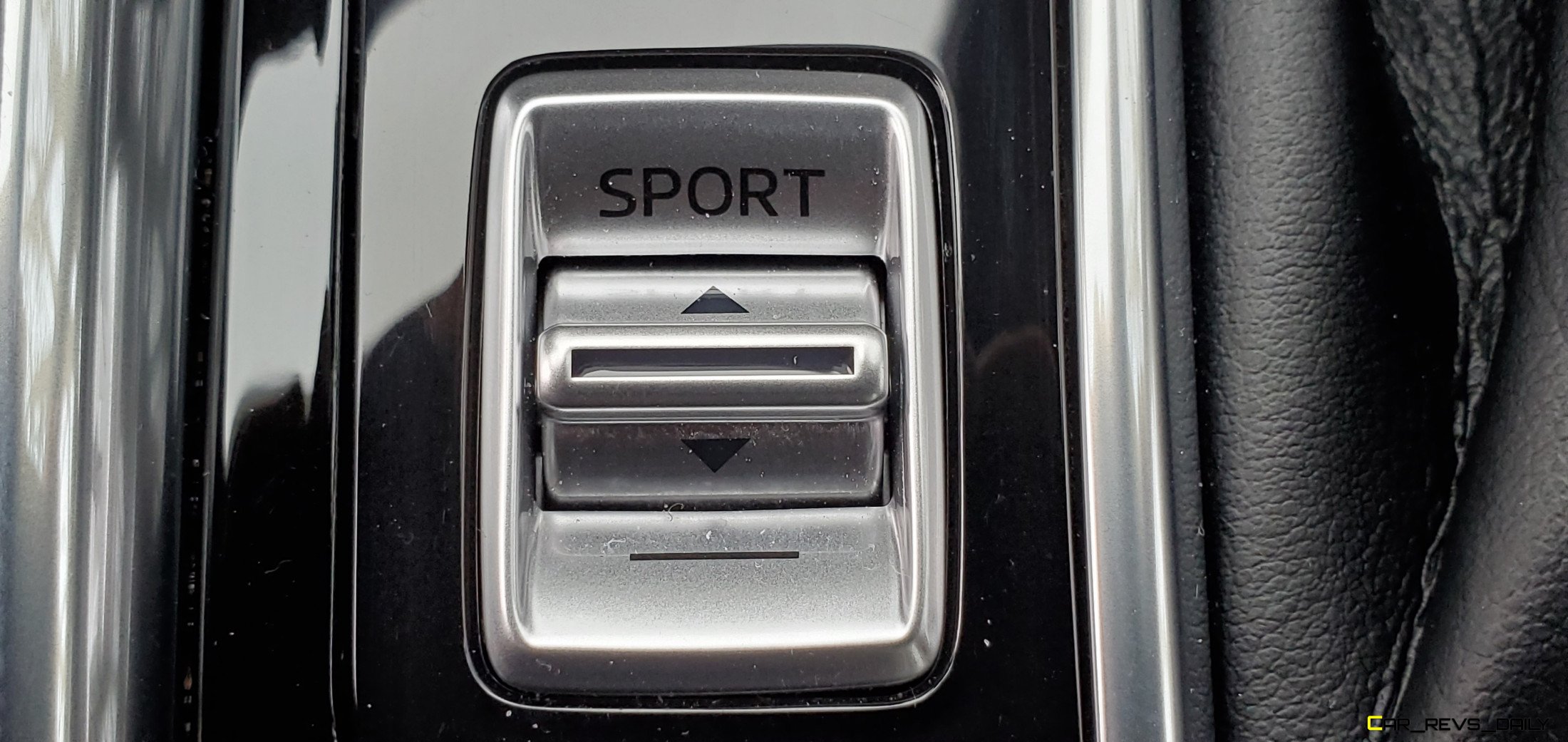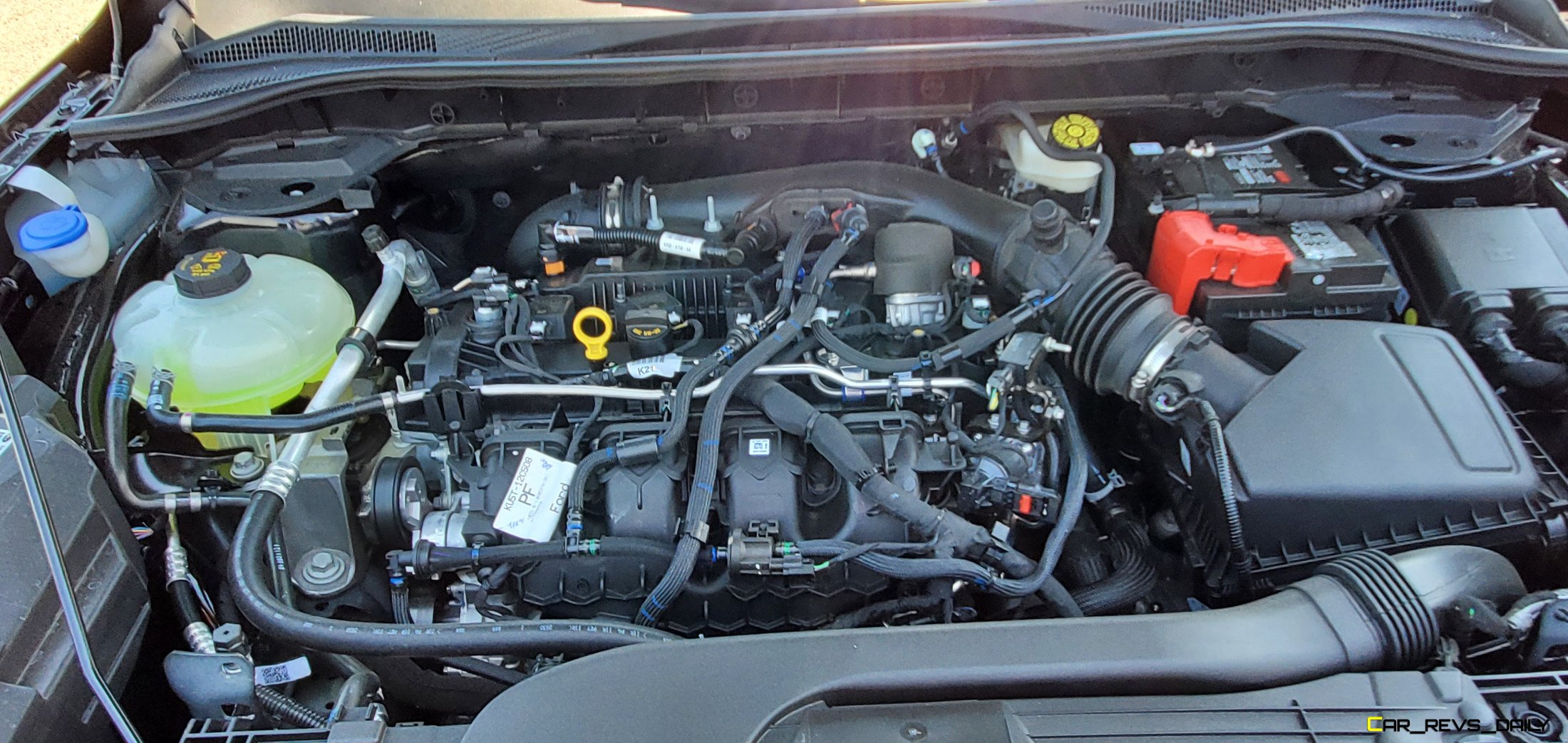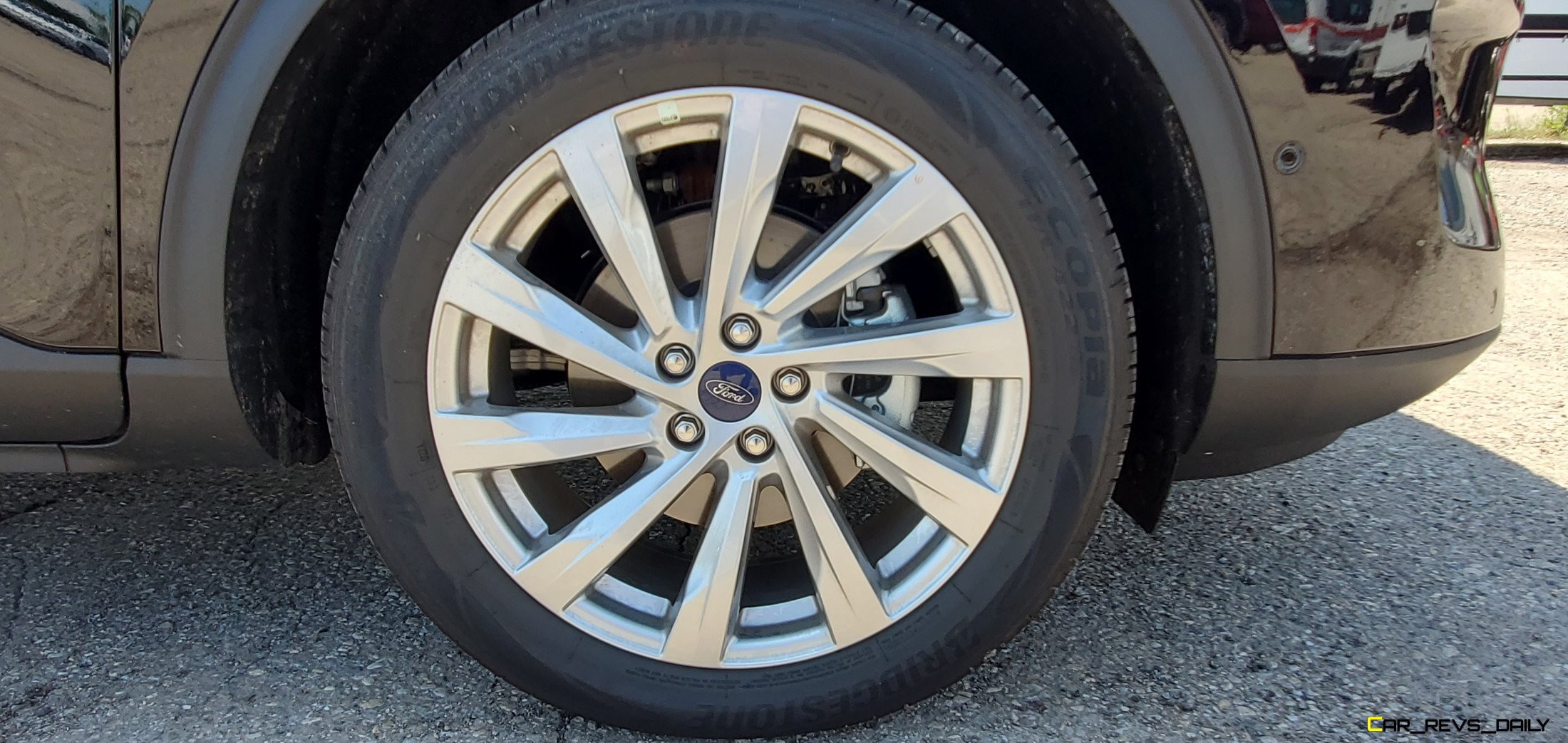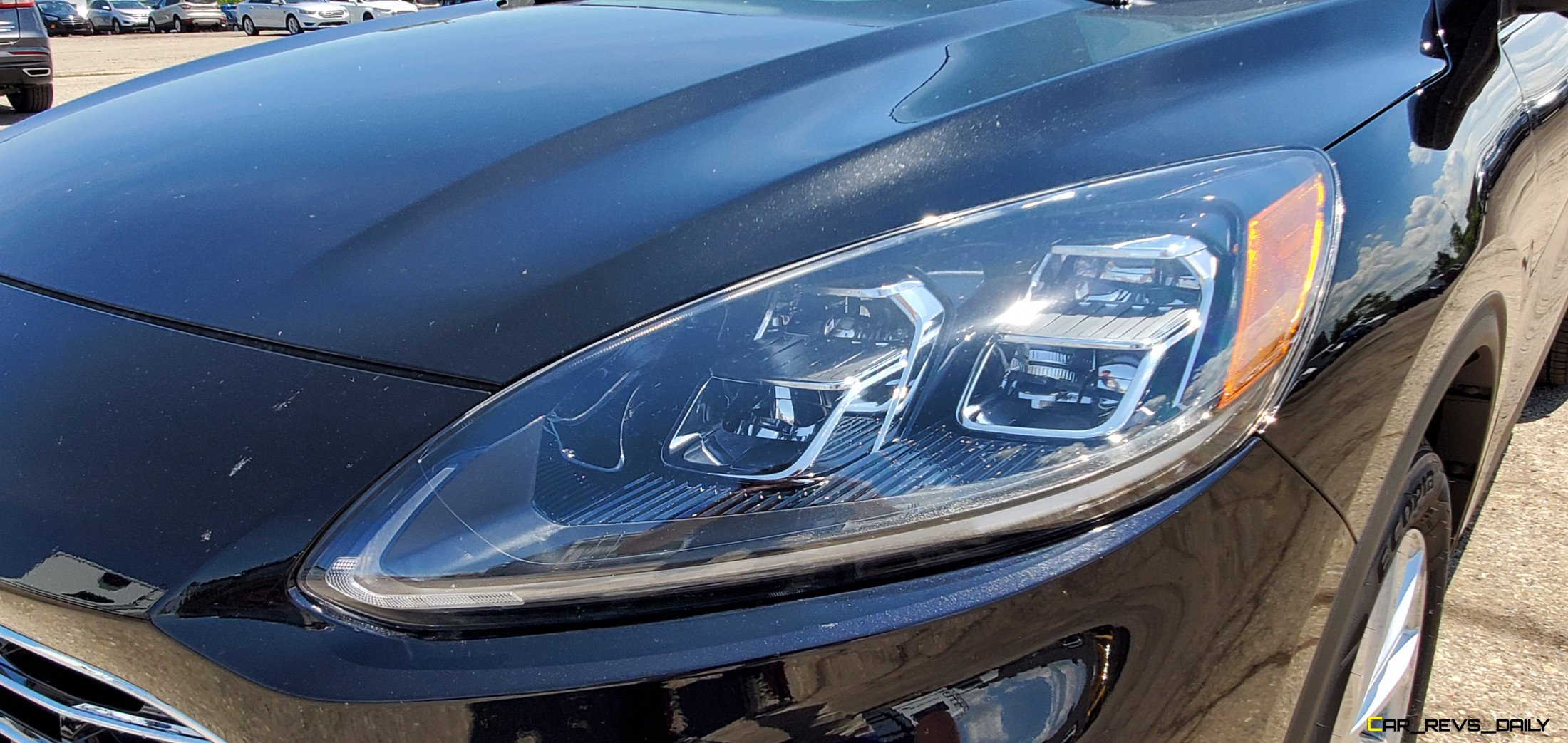Luxury, it seems, is becoming more of a factor in the world of utility vehicles. Once considered a backburner item in the minds of mainstream utility buyers, the ability to have more coddling features has rapidly morphed into a key SUV keystone. But which SUV can play the role of value-focused luxury entry best? To find out, we picked two SUVs (the 2021 Ford Escape Titanium and the 2021 Mazda CX-5 Signature) and put them through a battery of tests to try and find out which one reigns supreme? Both have benefited from minor updates since their last battle, and we wanted to see if some of these updates have helped shift the tides of war for both of these SUVs.
Ford’s Escape Has Porsche Vibes, But CX-5 Has Much More Depth
Our first round of testing centers around the exterior styling of both contenders, and it’s very apparent that the two go through the motions in several different ways. The Escape centers on being the expressive one of the duo, especially when you look at some of its lines. The last generation Escape was never known for being handsome and preferred to go through life banking on its functionality.
The 2021 Escape, on the other hand, channels much of its inspiration from Ford’s European models, and it clearly shows in the front-end styling. There’s a strong Porsche flavor to it, with the front grille and the headlights channeling more aggression and personality into the Escape. The side profile also channels this active spirit, and Titanium models stand out by offering more chrome accents and bigger wheels. But while the front and the sides of the 2021 Escape Titanium help create a good first impression, things rapidly fall apart when you get to the rear of the utility. With all the personality that the Escape comes with, it’s a real shame that the back end has the personality of Lurch from The Addams Family. The taillights are an improvement over the old model, but they don’t draw the eye the way some other utility models do. All 2021 models benefit from minor tweaks as well as three new packages that add more equipment and features to a properly equipped Escape.
The 2021 Mazda CX-5 Signature, on the other hand, is a very prominent example of how executing the finer details can make a far bigger impact when all things are considered. The grey hue of our tester might have given it more of a stealthy vibe, but the secret lies in some of its subtler magic. The front fascia follows the core design elements that we have seen in other Mazda offerings, with the grille being nicely complemented by sleek-looking headlights. Signature models up the chrome content, but the look still looks delightfully understated. Unlike the Escape, the rear of the Mazda is much more athletic-looking, and it does a far better job of drawing attention to itself, especially with its dual exhaust tips. Mazda has said in the mast that it wants to rewrite the way consumers perceive its SUVs, and based on what we have seen, we think that the CX-5 is doing a good job of doing just that. It also helps too that a bigger 10.3-inch infotainment screen and some minor revisions enhance the CX-5’s luster for 2021.
The War Of Interiors Decided By Materials, Technology
With the war of exterior styling being narrowly won by the CX-5, we ventured inside both models to get a better sense of what it’s like to spend time inside both of them. Unlike the hotly contested battle of exterior aesthetics, the winner here was much clearer, with the Escape getting trounced by the Mazda. That’s not to say that the Escape put up a good effort with Ford designers doing a good job using a more design-focused dashboard with plenty of curves and even a splash of grained faux wood trim. The leather-trimmed seats are also comfortable on long hauls as well, while the B&O premium audio system helps raise the quality of the sound experience somewhat.
So, where did it all go wrong for the Ford? The answer is in material quality, with the Escape giving up way too much ground to the Mazda (and other rivals) in this regard. Look around the Escape, and the omissions are painfully obvious with the cheap-looking door cards and plastics spoiling the near-luxury experience. This disregard for interior quality is inexcusable, considering that many of its rivals are putting a much greater emphasis on making the interior a much more prominent part of the ownership experience.
As for the Mazda, it suffers from a different sort of ailment, but thankfully it does not involve the interior design. Mazda stylists were clearly trying to punch above their weight class here, and it shows when you sit in the leather seats, and you have a chance to look around. The dashboard design is very reminiscent of what we have seen in recent German luxury sedans. The fit and finishes here are superb, with Mazda stylists doing a good job of mixing different high-end materials, including the real rosewood accents. We also liked the sounds that emanate from the optional Bose audio system, and second-row passengers have a decent amount of room to stretch out and relax.
As mentioned, amid all of this attention to detail, there’s one key thing that the Mazda has going against it, and that’s the infotainment technology, with the system being the key Achilles heel in the interior. The system uses a large 10.25-inch screen but this welcome upgrade is hobbled by the control wheel/knob mechanism used to control it. When combined with the slow software, it results in a user experience that’s very frustrating and is not even close to the seamless experience offered by Ford’s latest SYNC-powered system.
The Spectrum Of Performance Defines Both Entries
While neither the Escape nor the Mazda are formal performance SUVs, there are buyers out there that want their SUV purchase to have some fire under the hood for towing or even taking the occasional sweeping corner or two. Escape’s lower trims come with a smaller 1.5 liter turbocharged four, but range-topping Titanium models come equipped with a 2.0 liter turbocharged EcoBoost good for 245 horsepower. Buyers can also equip the Titanium with a 2.5-liter hybrid assisted four-cylinder. Still, with the Mazda not offering any hybrid option for its buyers, we chose to bench the Titanium Hybrid for the sake of this comparison.
The 2,0 liter allows the Titanium to tow 3,500 lbs, and it also allows the Escape to sprint to 60 mph in 5.7 seconds. But while the engine is willing, the suspension is still not quite up to the task. It’s an improvement over the old model, but the handling here is more relaxed, and the Escape prefers to follow and not lead you into the corner as a spicier SUV would. Unfortunately, that puts more of the work on the driver, who has to contend with a vague tiller. Thankfully, the eight-speed automatic is a smooth operator and allows the Escape to retain its harmonious character.
As for the Mazda, it’s arguably the track athlete of the group with our Signature grade CX-5 arriving with the uplevel 2.5 liter turbocharged four-cylinder that matches the Escape’s 250 hp but outshines it by making 320 lb-ft of torque (the Escape makes 280 lb-ft.) That extra slice of torque allows the CX-5 to have a completely different driving character. The CUV has a more vigorous personality than the Escape, with the engine feeling more assertive and sure of itself, especially when the CX-5 is given a chance to stretch its legs.
This vigor helps make up for the transmission giving up two gears to the Ford with all CX-5 models featuring a six-speed automatic. Despite the gear count looking like it came from 2011 versus 2021, this six-speed is still a solid unit and does a good job working with the engine’s powerband to make the CX-5 very enjoyable to drive.
Putting the CX-5 in Sport mode sharpens up the engine and the throttle response, but the heightened senses do come at a price, with the CX-5 eagerly gulping down its fuel reserves. Speaking of fuel, the type of gasoline you put in determines what kind of horsepower you get. While the engine can switch between regular and premium, the Mazda performs at its best with premium fuel, and if you let it drink the sweet stuff, it makes 250 horsepower. Swap for regular, and that figure drops to 227 horsepower though thankfully, the torque number is unchanged.
Value Quotient
At the end of the day, which one of these popular SUVs should you buy for your near-luxury dollars? Pricing-wise, the two are very close, with the Escape Titanium starting at a slightly higher $37,695 while the Mazda goes for a lower $37,505. With this razor-thin of a margin splitting the difference, the battle shifts to optional extras, which can rapidly shift momentum in a comparison. The Escape Titanium offers a $2,850 “Titanium Elite” package that brings higher quality materials to the Escape and causes the price to go just over $40,000. Our Titanium equipped photo subject (kindly lent to us by a local Ford dealer) came with this package but we wish Ford would’ve just made some of the package’s goodies standard from the start versus making it a pricey extra
The Mazda has a smaller options list, but the Signature comes with plenty of standard equipment. Mazda’s preferred method of personalization lies in the various accessories that buyers can add to their ride. This allows the CX-5 to have more flexibility in terms of pricing and allows customers to have an easier time balancing out what they need versus some of the things that they don’t.
If we had to choose a winner, we would go with the Mazda CX-5 in this particular skirmish. The CX-5 is clearly trying to punch above its weight class by offering buyers a cabin that exudes high quality and doesn’t skimp on the details. That’s in contrast to the Escape, which feels like it’s just only going through the motions and takes shortcuts in its attempts to maintain a near-luxury image. The fact that it offers a separate package to correct some of these flaws is a sign of just how far behind the curve it is in this slice of the segment, considering that the CX-5 Signature comes right out of the factory with good materials and that unique sense of extra.
The Escape does make up some ground by wielding a superior transmission and infotainment technology. Still, Ford needs to create a more compelling and complete package in order for the Escape Titanium to have a better chance of fighting off rivals not only from Mazda, but Hyundai, Toyota, and Chevrolet, with all three of these brands sharpening their SUV game in an attempt to draw in more buyers.

Carl Malek has been an automotive journalist for over 10 years. First starting out as a freelance photographer before making the transition to writing during college, his work has appeared on numerous automotive forums as well as websites such as Autoshopper.com.
Carl is also a big fan of British vehicles with the bulk of his devotion going to the Morgan Motor Company as well as offerings from Lotus, MG, and Caterham. When he is not writing about automobiles, Carl enjoys spending time with his family and friends in the Metro Detroit area, as well as spending time with his adorable pets.

